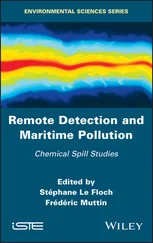Botanists have studied the effects of pollution on a wide range of plants, mostly with inconclusive results. They have attempted to find “indicator species” which may be used to measure pollution. Such a species would only grow where pollution was below a certain level. The most successful work has been with lichens. Several species of lichen are absent entirely from the industrial areas of high pollution, and reappear on the outskirts. This problem has been studied in Northern Ireland, near Belfast, and around Newcastle upon Tyne. Fig. 3 shows how the lichen cover of tree trunks increases from the city centre of Belfast to its outskirts. It has been reported that the habit of growth of individual species was affected, so that some seemed barely able to exist where others grew normally. The subject is, however, not an easy one. It is necessary to be competent to recognise individual lichen species accurately, and to distinguish these in their sterile sorediate forms which often occur under unfavourable conditions. I must confess that I personally have been disappointed by the potentialities of this group. After reading in the literature that “a salient feature of lichen’s ecology is that these plants are very scarce in the neighbourhood of towns” I visited the Lower Swansea Valley (Plate 1), perhaps the most polluted area in Britain. My first impression of the soil was an almost pure culture of lichen, and a wooden railway bridge was equally encrusted. These were of course resistant species easily recognised by a specialist, but showing that the method used in Belfast and illustrated in Fig. 3 cannot be generally used except by experts. In time botanists may find other plants which are better indicators; in fact there has been some progress in this field, but the confusion to-day relating to the effects of pollution suggests that unless it is very severe it may not be a factor of major importance in the ecology of most regions.

Fig. 3. Increase of lichen cover outside the city of Belfast. (After A. F. Fenton.)
One particular element – fluorine – requires special attention. Fluorine occurs in minute quantities in all plants and animals, and it is one of the essential elements of protoplasm. If the natural level falls below a minimum, and this occurs in nature, harmful effects may be seen. One (but only one) of the reasons for the poor teeth found in many parts of Britain and North America is that the natural water may have a very low fluorine content, less than one tenth part per million, and combined with a “sophisticated” diet this may cause fluorine deficiency. A tiny additional amount, up to 1 part per million, may then be added to the water, and this has been found to improve tooth structure in children and reduce dental decay. This is one instance of a general principle, that a substance essential in small amounts may be toxic when the proper level is exceeded. The toxicity of fluorine in larger doses has made some people oppose the addition of this element to water, though there is no evidence that drinking water with 1 part per million ever does harm.
Fluorine occurs particularly in the smoke from brickworks, which are often surrounded by agricultural land. Other industries, including iron and aluminium production, are also important in this connection. Unlike active organic poisons, which may break down quickly to harmless substances, once fluorine has contaminated an area it remains a danger until it is physically removed. Fluorine only damages plants at relatively high concentrations, though it is at least ten times as toxic as sulphur dioxide. However, phytotoxic concentrations are rare, even near to industrial sites. The main danger from fluorine is that after deposition it is concentrated by growing plants. For example, grass has been found with as much as 2,000 parts per million. If this grass is eaten by stock, or by wild animals, they will certainly be seriously affected and will probably be killed. Lower concentrations have less drastic effects. The first symptoms of fluorosis are dental; the teeth are rough and mottled. Bigger doses cause bone abnormalities, lameness and general loss of condition. I know of no reports of fluorosis affecting wild life, but small mammals in affected areas are certain to suffer. Its stability, and the way it is concentrated by many food plants, makes fluorine a potential danger anywhere near a source, and abnormal weather conditions and air currents could affect vegetation, and thus animals, over a wider area. Fluorine seems a rather special, and dangerous, case of a poisonous substance entering the atmosphere, but it should make us more careful about accepting pollutions which may contain other, as yet undetected, dangers.
Air pollutions can thus have acute effects, when intense in industrial regions. They can have chronic effects, which may extend further from the source. In these cases emissions are acting as poisons, and the effects depend on the susceptibility of different plants and animals. In general, wild life, being remote from industry, would seem to be little harmed. However, there is one other way in which air pollution affects wild life, indirectly, by altering the physical environment.
We have noted that as much as two pounds of dirt may be deposited in a year on a square yard of ground near a factory. On the outskirts of our towns, the amount is perhaps an ounce. An ounce is quite a large quantity, more than the weight of pigment necessary to turn a blank paper into a valuable painting. Sheep within a considerable distance of industrial towns are black, and so are tree trunks and most animate and inanimate surfaces after a few months’ exposure. We find that a number of different species of moths, which are normally pale coloured in unpolluted districts, are usually represented by melanic forms which are black or at least much darker than the “normal.” This phenomenon of industrial melanism has been fully reviewed by Dr. E. B. Ford in his book Ecological Genetics , so there is no need to go into details here. It has been established that various moths, and the Peppered Moth ( Biston betularia) has been most fully studied, have evolved melanic races which are adapted to their new surroundings. In clean areas, where tree trunks are covered with pale lichens, the typical form of the Peppered Moth is difficult to see. The melanic form is very prominent. This difference is not only apparent to man, but to birds which prey on the insects, and readily take them when resting on trees. In industrial areas, where the trunks are blackened and lichens are comparatively scarce, the melanic form is inconspicuous and is preyed upon least. This phenomenon has demonstrated that evolutionary changes may be more rapid than had previously been imagined. Not all evolutionary changes have such obvious morphological differences as we find in the Peppered Moth, and differences in physiology or behaviour may be selected and perpetuated by pollution, with important effects on wild populations which may spread outside the area in which they first become apparent. Thus many types of organism may be changing to-day, as a result of industrial pollution, with far-reaching effects which we do not yet suspect.
Man-made air pollution occurs where man is most numerous, so we are the species most affected. For this reason we take many steps in the attempt to safeguard our own species. Nevertheless it is man who normally is subject to the highest concentration of pollutants, so that he can be said to be acting as a “guinea-pig” for wild life. This is the reason why the countryside is not more seriously damaged though there is no excuse for complacency, or for underestimating the damage in urban and industrial areas. Suspicions that sulphur dioxide and other substances may be more harmful than is at present accepted may make us even stricter in our controls. Pure air in an industrial civilisation is expensive, but it is possible. Already our larger chemical manufacturers have spent millions of pounds on reducing air pollution. There are even vested interests at work. I saw recently a paper entitled “Long-range economic effects of the 1964 Clean Air Act”; I expected it to deal with improved agriculture and health. In fact it foretold up to fifty per cent increases in sales for equipment to control air pollution! Let us hope this target is reached.
Читать дальше













